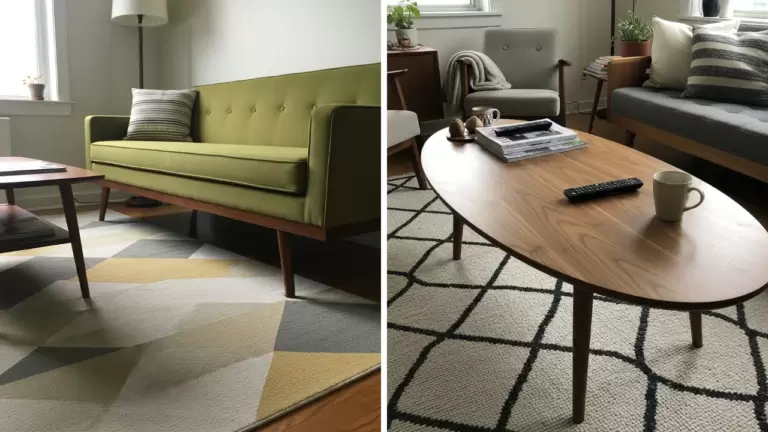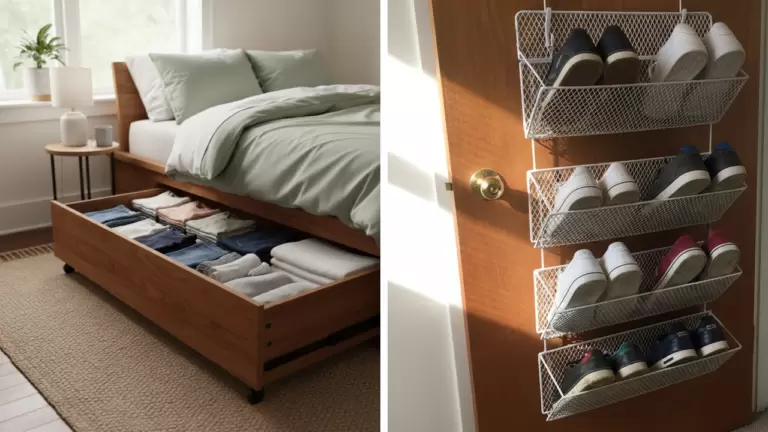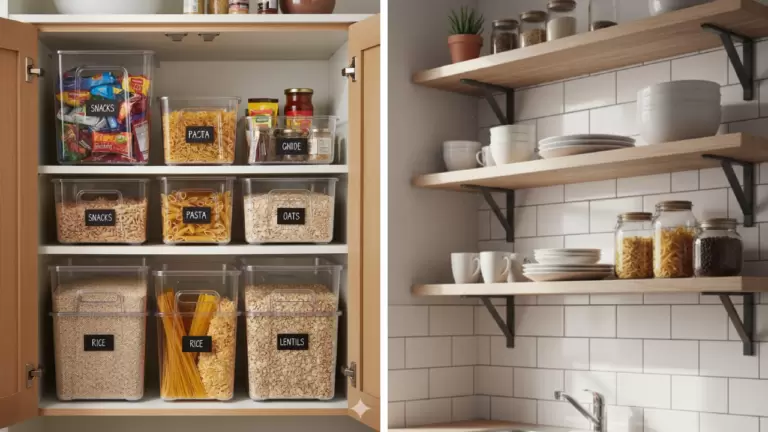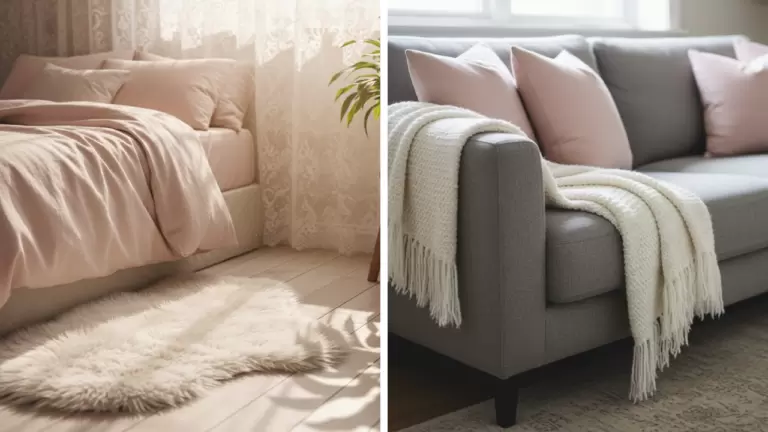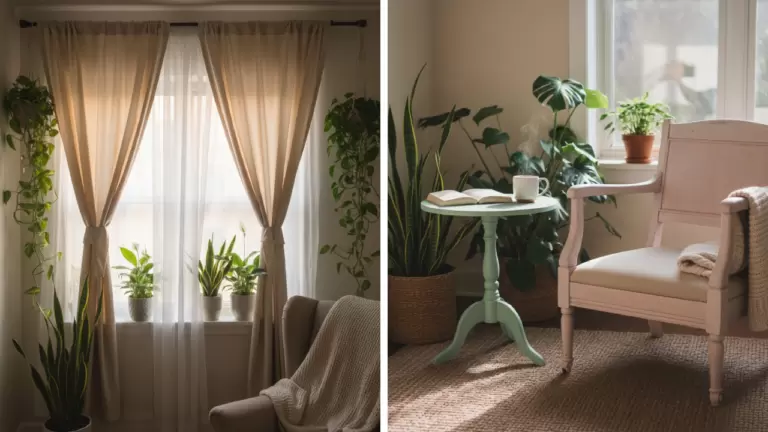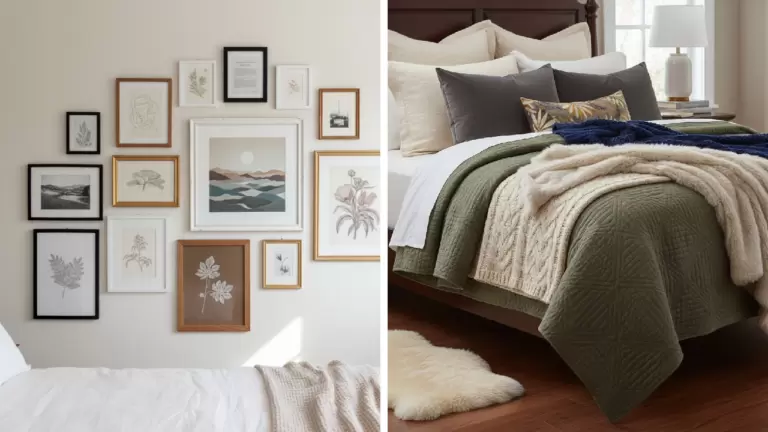30 Small Apartment Living Room Ideas
This post may contain affiliate links: full affiliate disclosure.
Living in a small apartment doesn’t mean sacrificing style or comfort! If your living room feels more like a closet, don’t worry—we’ve got you covered.
These 30 genius, practical, and design-forward ideas will help you maximize every square inch, making your tiny space feel massive.
Let’s make that tiny room fabulous!
1. Use a Small Sofa Instead of a Sectional
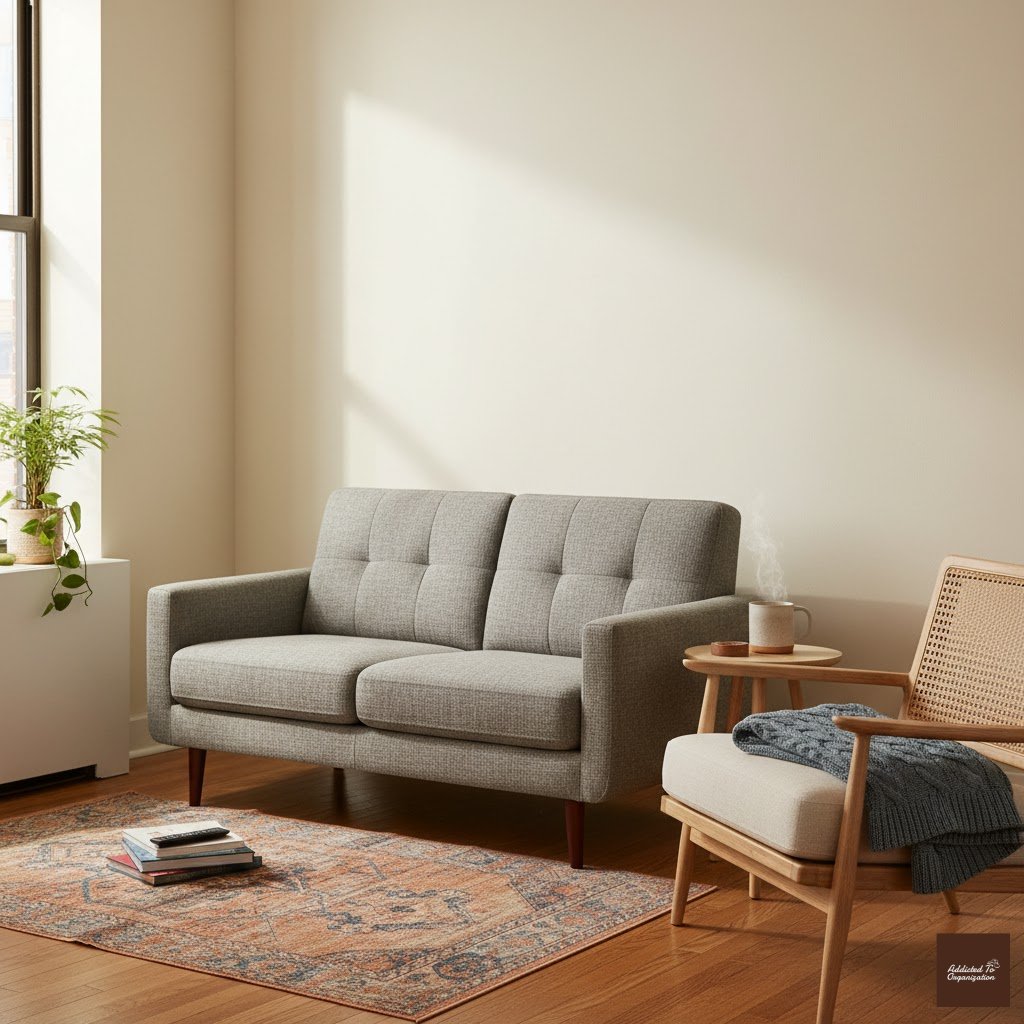
While a sectional might seem cozy, it immediately consumes all your available floor space and makes the room feel blocky. Instead, opt for a slim two-seater or loveseat with narrow arms. If you need more seating flexibility, pair the loveseat with a lightweight, complementary accent chair that can easily be moved around or tucked into a corner when you’re not using it. This arrangement is far more adaptable than one massive, immobile piece.
2. Choose Furniture With Legs, Not Skirts

This is one of the oldest and best visual tricks in the book! When you choose sofas, chairs, and consoles that are slightly elevated on slender legs, you allow light and air to pass underneath them. This keeps the floor line visible, creating an uninterrupted visual plane that tricks your brain into perceiving the room as much deeper and more open than if the furniture were sitting directly on the carpet.
3. Swap a Coffee Table for an Ottoman With Storage
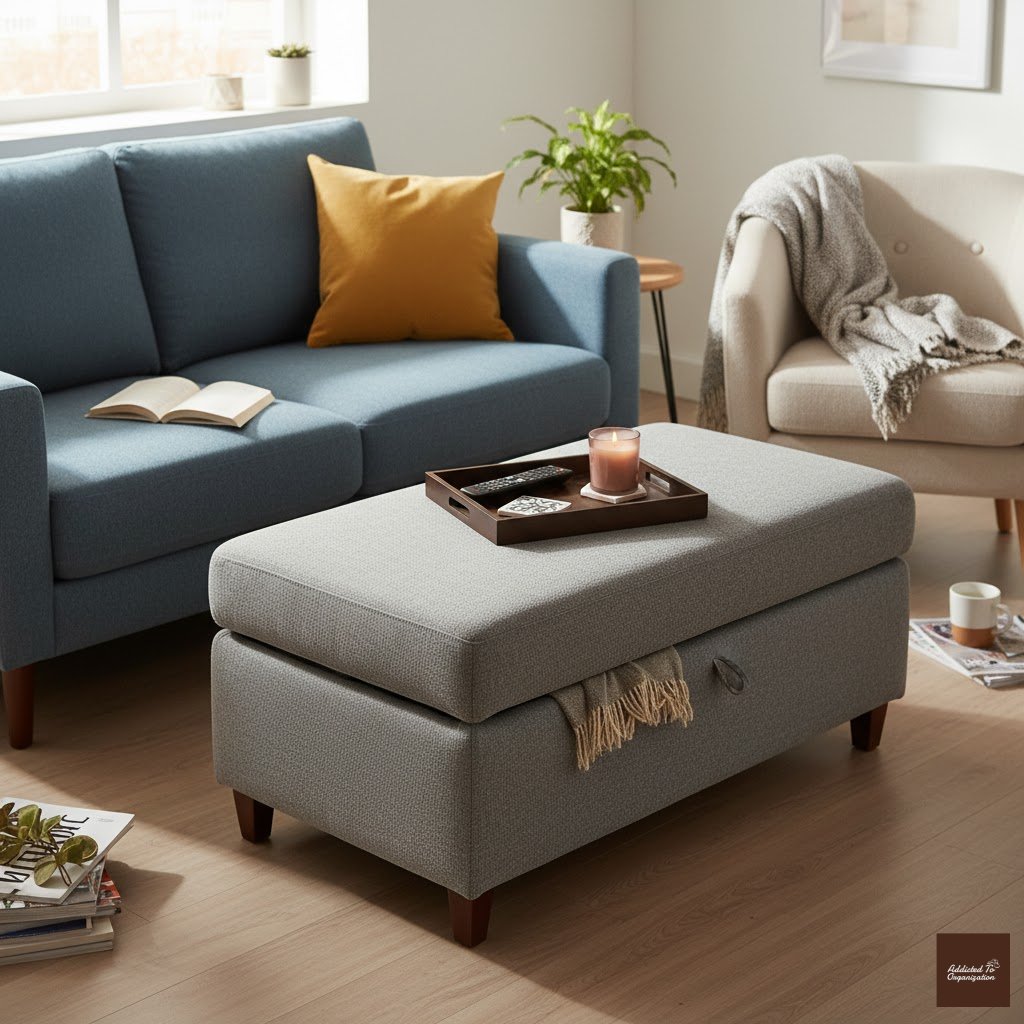
A traditional, heavy coffee table is often dead space, but a storage ottoman is a multi-functional powerhouse. It can serve as a footrest, extra guest seating, a coffee table (just add a decorative tray for drinks!), and, most importantly, a secret hiding spot for things like throws, remotes, or magazines. Maximize its utility to minimize the number of separate pieces you need.
4. Mount Curtains High and Wide
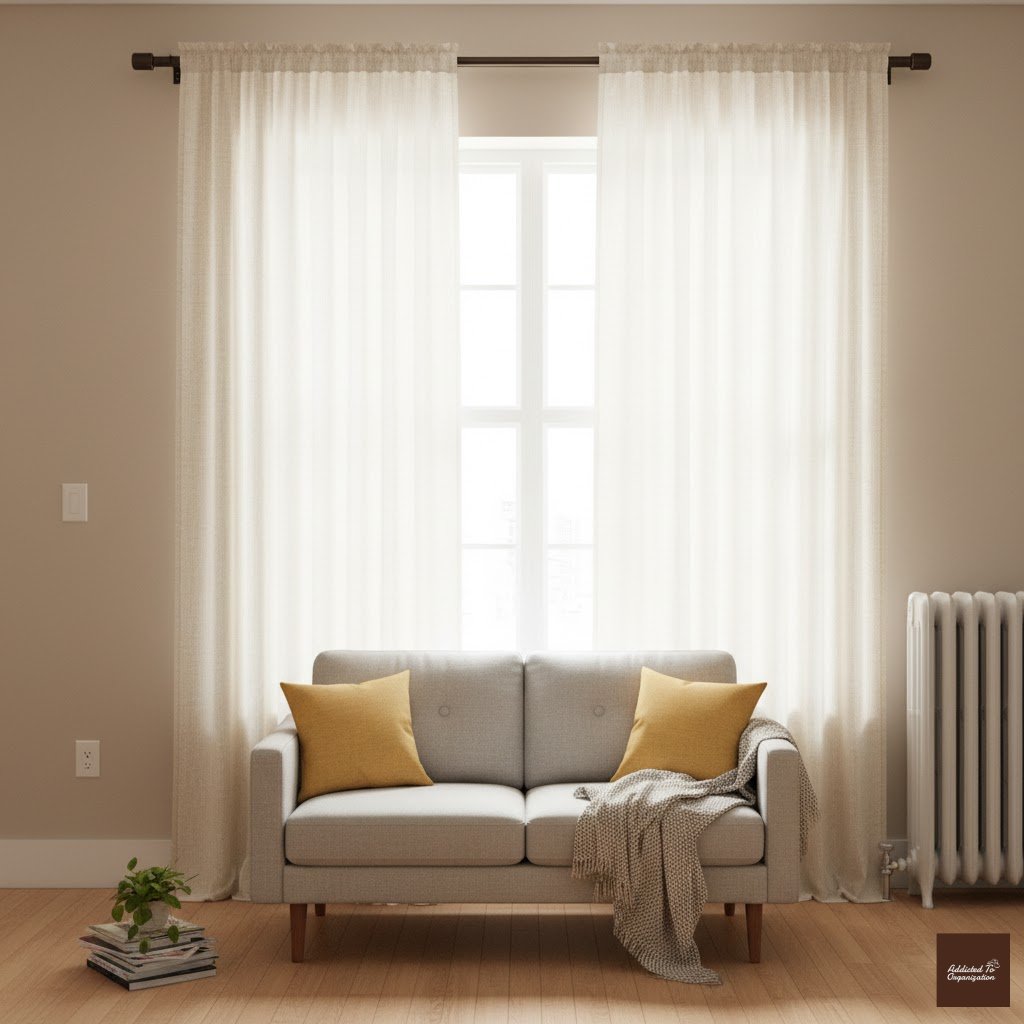
Say goodbye to skimpy curtains hung right at the window frame! For an instant visual upgrade, install your curtain rod just below the ceiling and extend it several inches wider than the window itself. This simple change draws the eye vertically, stretching the walls and making your ceilings feel dramatically taller, while also allowing maximum light to flood in when the curtains are open.
5. Use Light or Neutral Walls to “Open” the Space
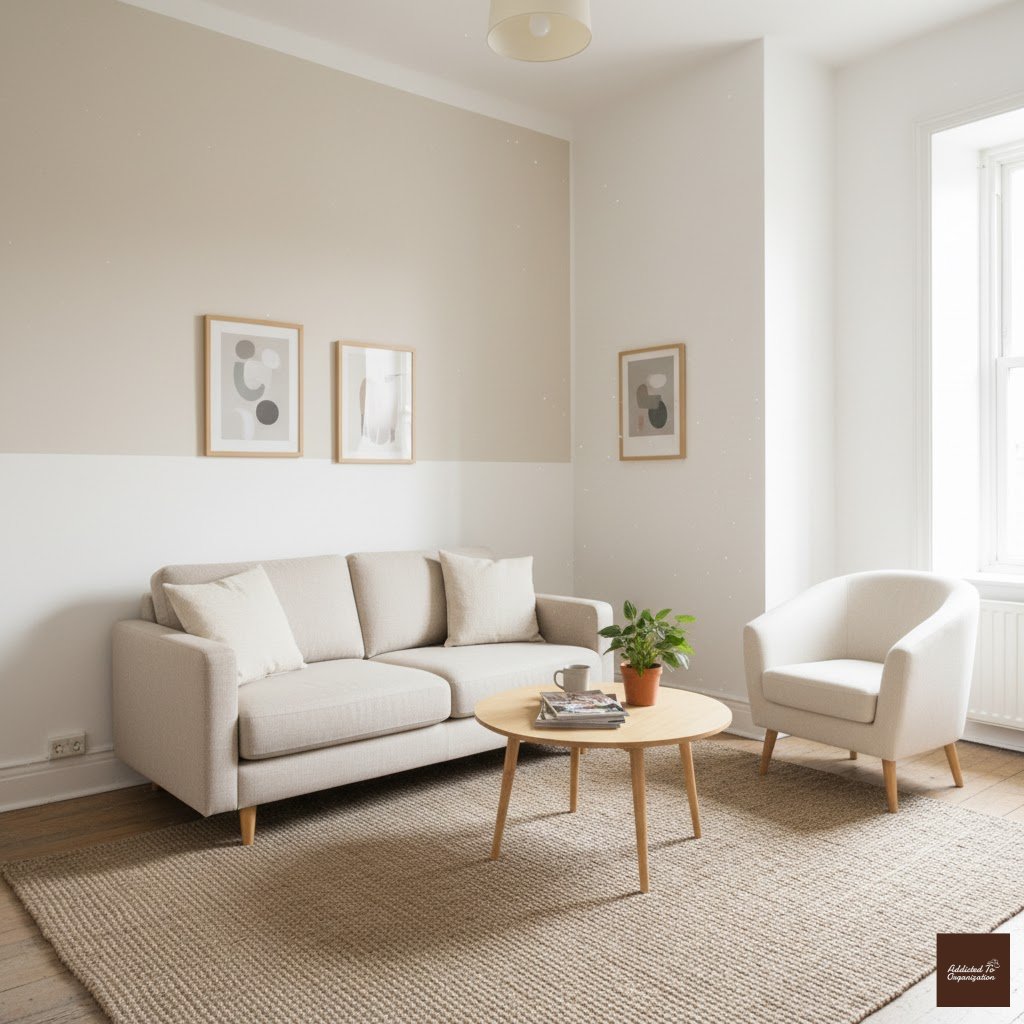
Dark colors absorb light and make walls feel closer, but light colors—think white, cream, pale beige, or foggy gray—do the opposite. They reflect natural and artificial light, helping the walls recede. This enhances the sense of space and brightness, making your entire living area feel effortlessly open and airy without requiring any structural changes.
6. Add a Slim Floating Shelf Instead of a Bulky TV Unit
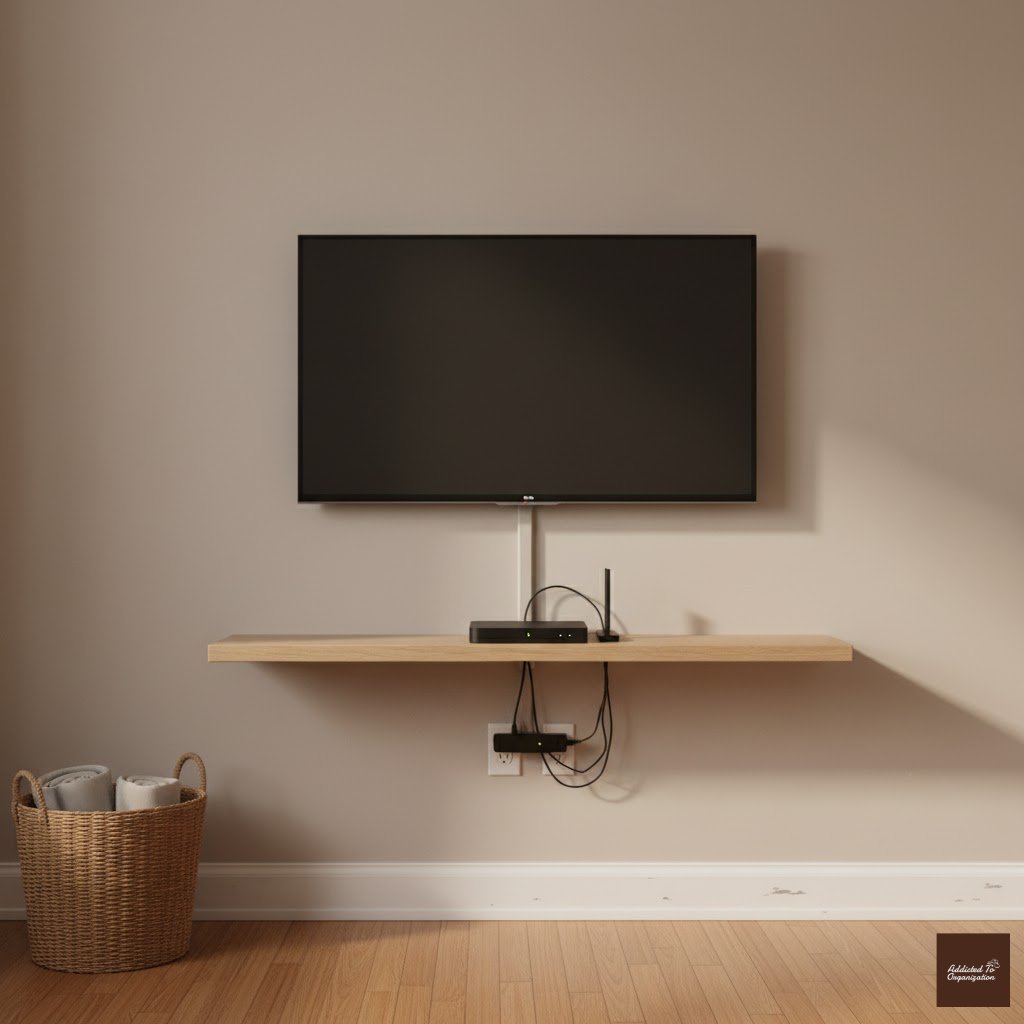
Forget media consoles that swallow up precious floor area. A floating console or shelf offers a clean, minimalist look and provides functional storage while keeping the floor completely exposed. This removes visual heaviness, makes cleaning easier, and ensures your small room maintains maximum sightlines.
7. Replace Table Lamps With Wall or Sconce Lighting
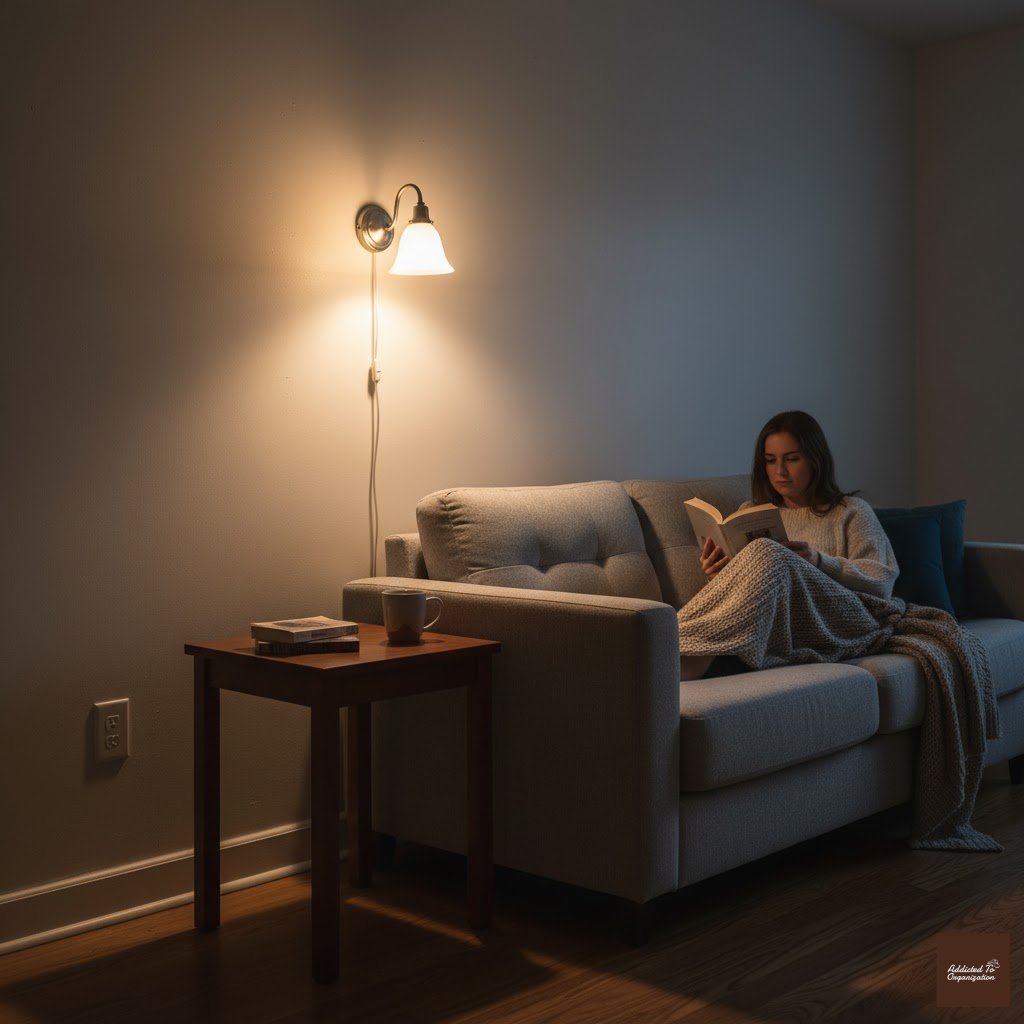
Table lamps eat up valuable surface real estate on side tables and consoles. By switching to wall-mounted or plug-in sconces, you free up those essential flat surfaces for drinks, books, or decor. Sconces also offer sophisticated, layered lighting, giving your small room a high-end, polished feel.
8. Hang One Large Statement Art Instead of Many Small Frames
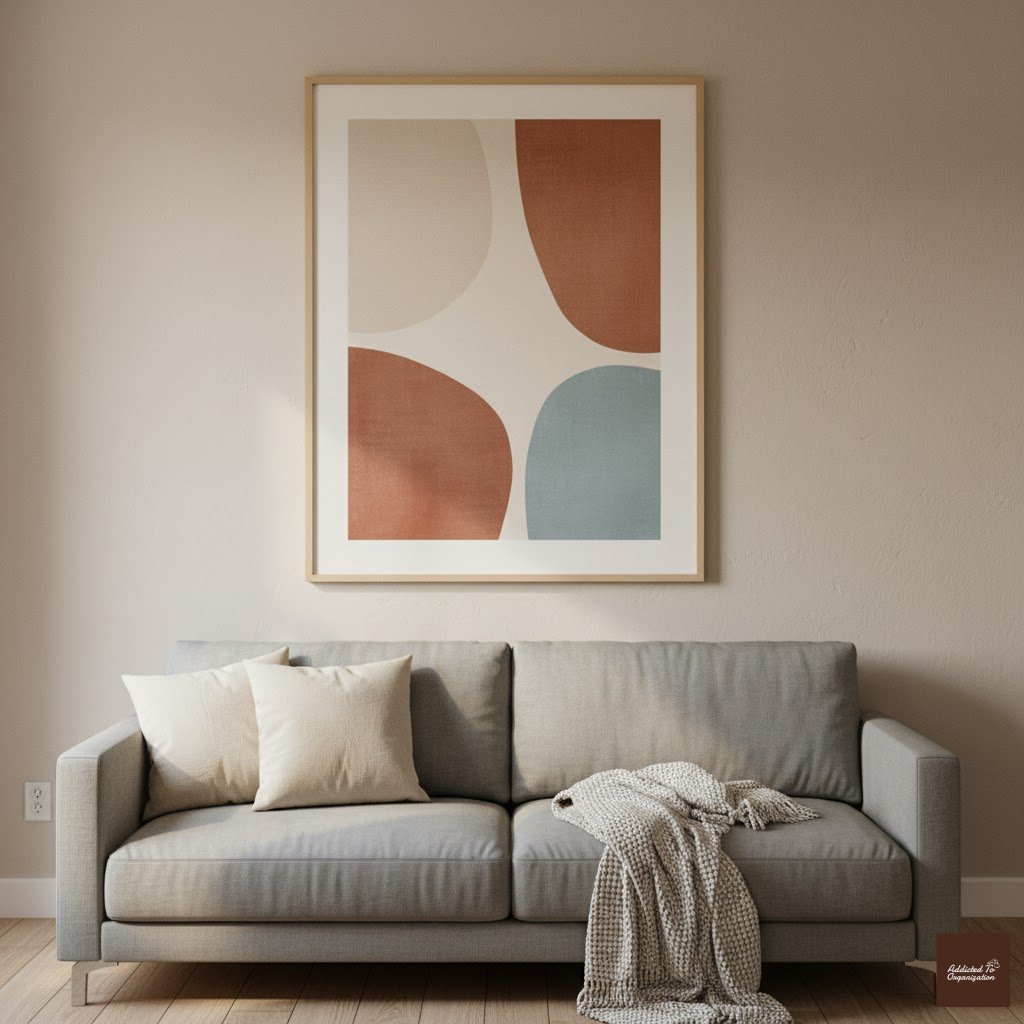
While gallery walls are trendy, a cluster of many small frames can create visual chaos in a tiny room. Instead, choose one single, large piece of focal art. This immediately cleans the visual field, anchors the room, and allows the eye to rest on a single, compelling element, making the space feel more intentional and less cluttered.
9. Use a C-Shaped Side Table
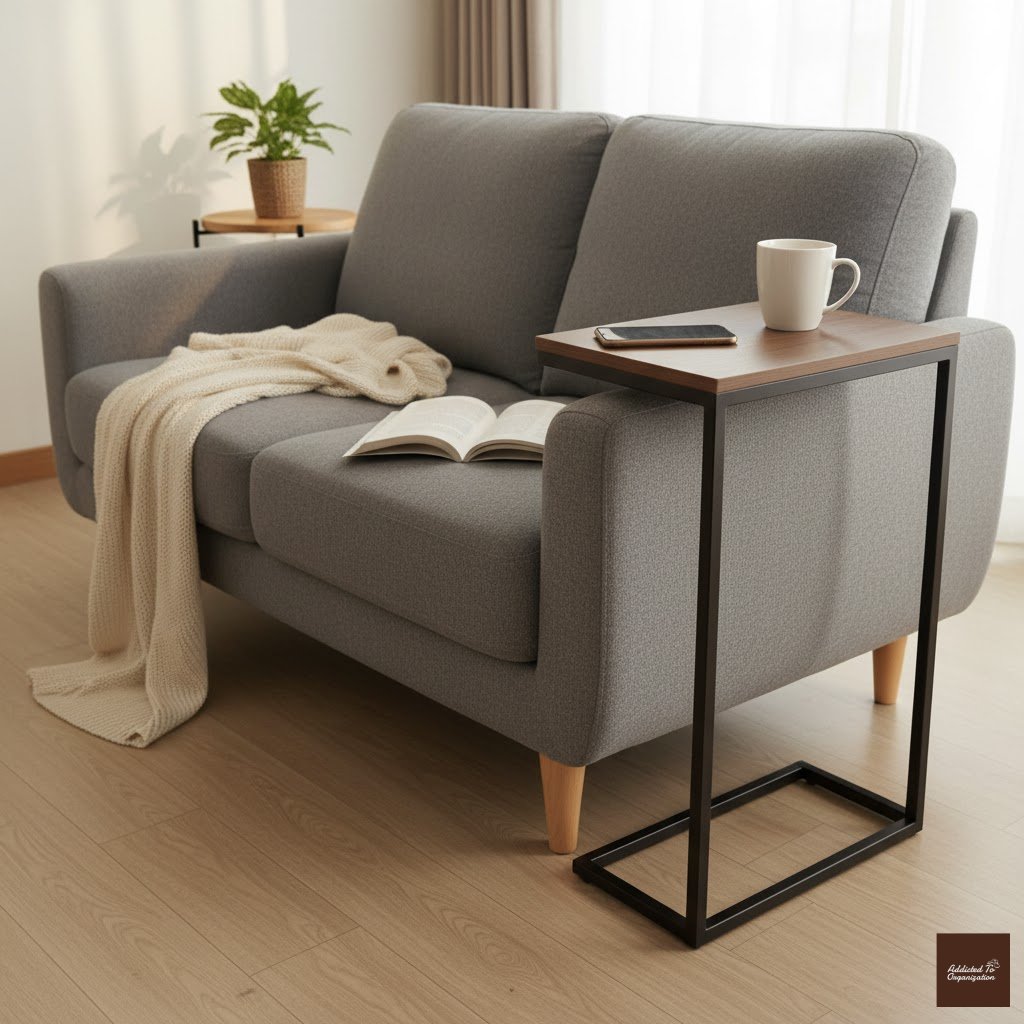
These ingenious tables are designed with a base that slides completely under the base of your sofa or chair. This allows you to pull the tabletop right over your lap for snacks or a laptop without the table taking up any permanent floor space. It’s the ultimate flexible surface for couch-side use.
10. Add a Mirror to Bounce Light and Fake More Square Footage
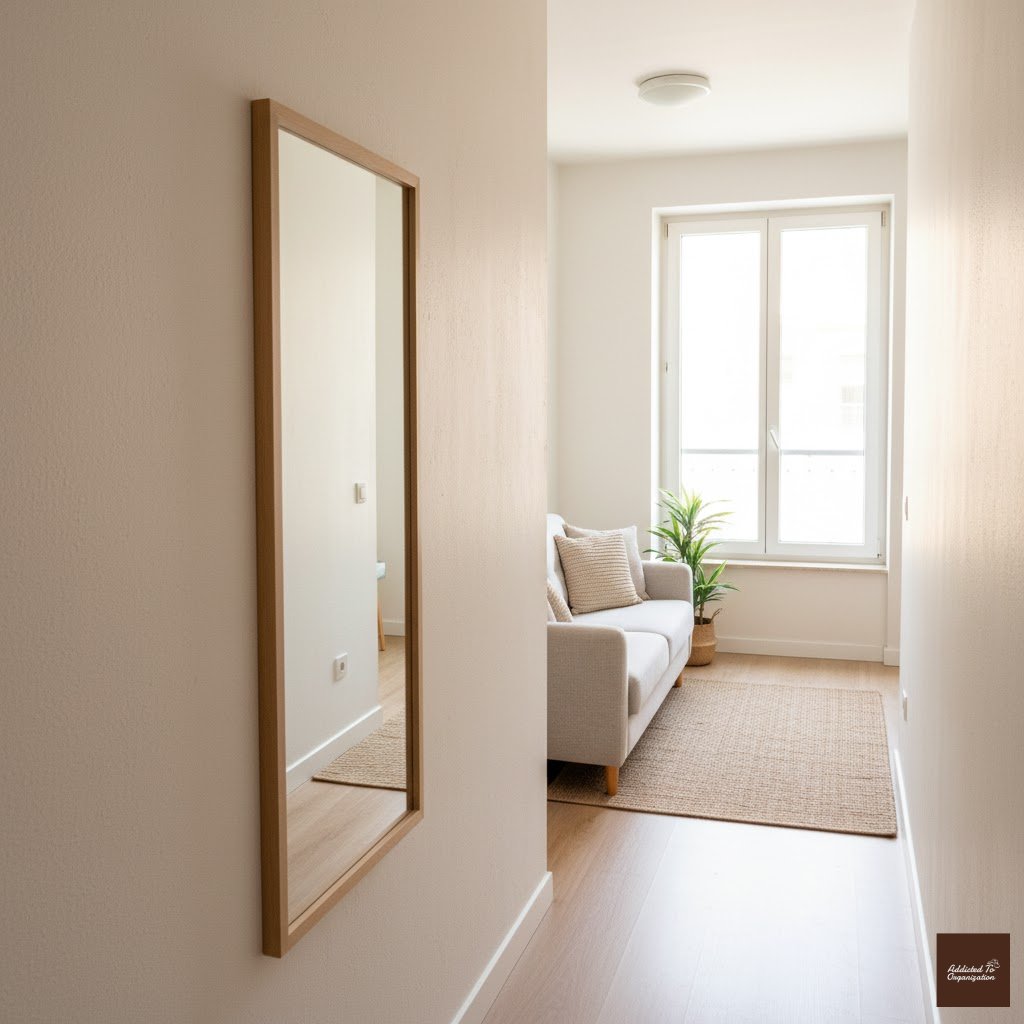
This is the oldest trick for a reason: mirrors work wonders. By strategically placing a large mirror opposite a window or a strong light source, you reflect light deep into the room. This not only increases brightness but also creates the illusion of depth, making the space appear to extend further than it actually does.
11. Choose a Glass or Acrylic Coffee Table
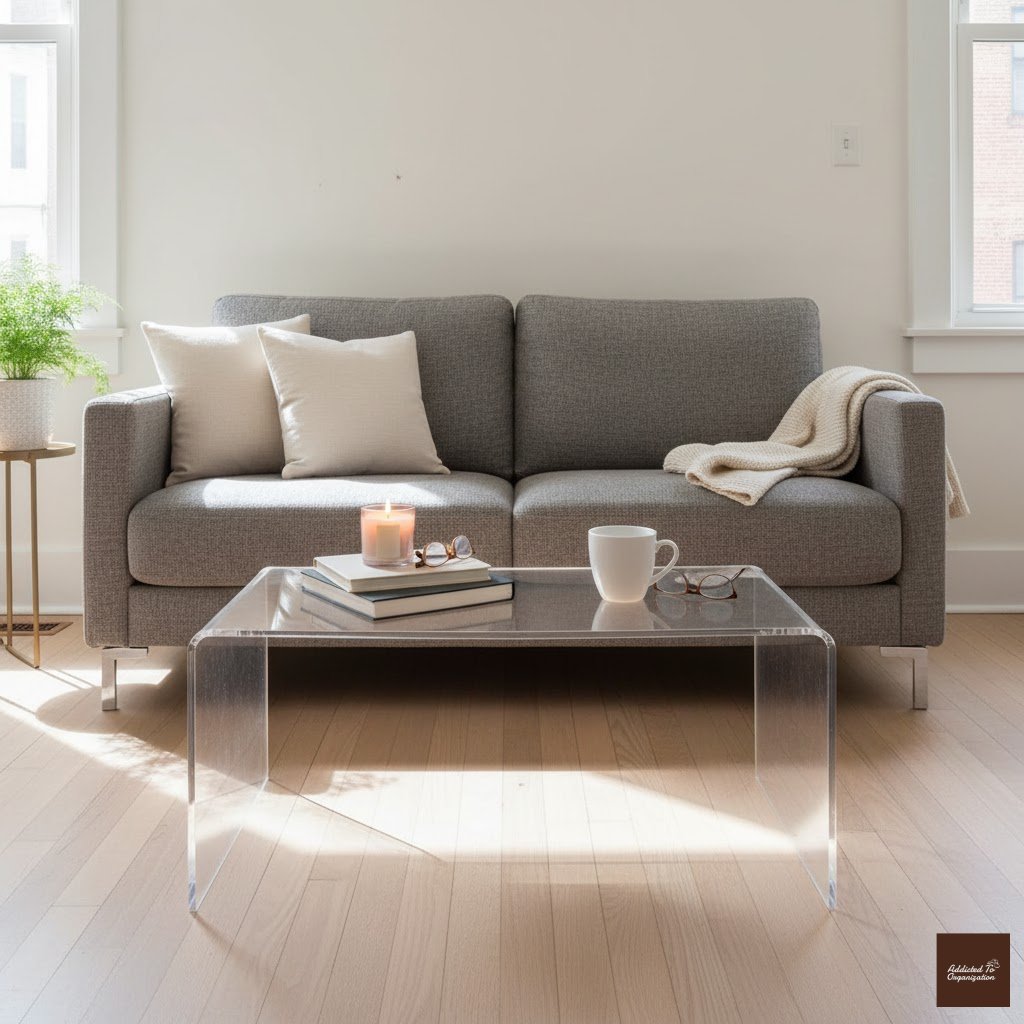
Visual density is the enemy of small rooms. Materials like glass, acrylic, or clear plastic allow you to see right through the furniture to the floor or rug beneath. This visual trick removes bulk, making the table “disappear” into the background and allowing your eye to travel further, which instantly enlarges the whole space.
12. Use a Single Large Rug to Define the Room
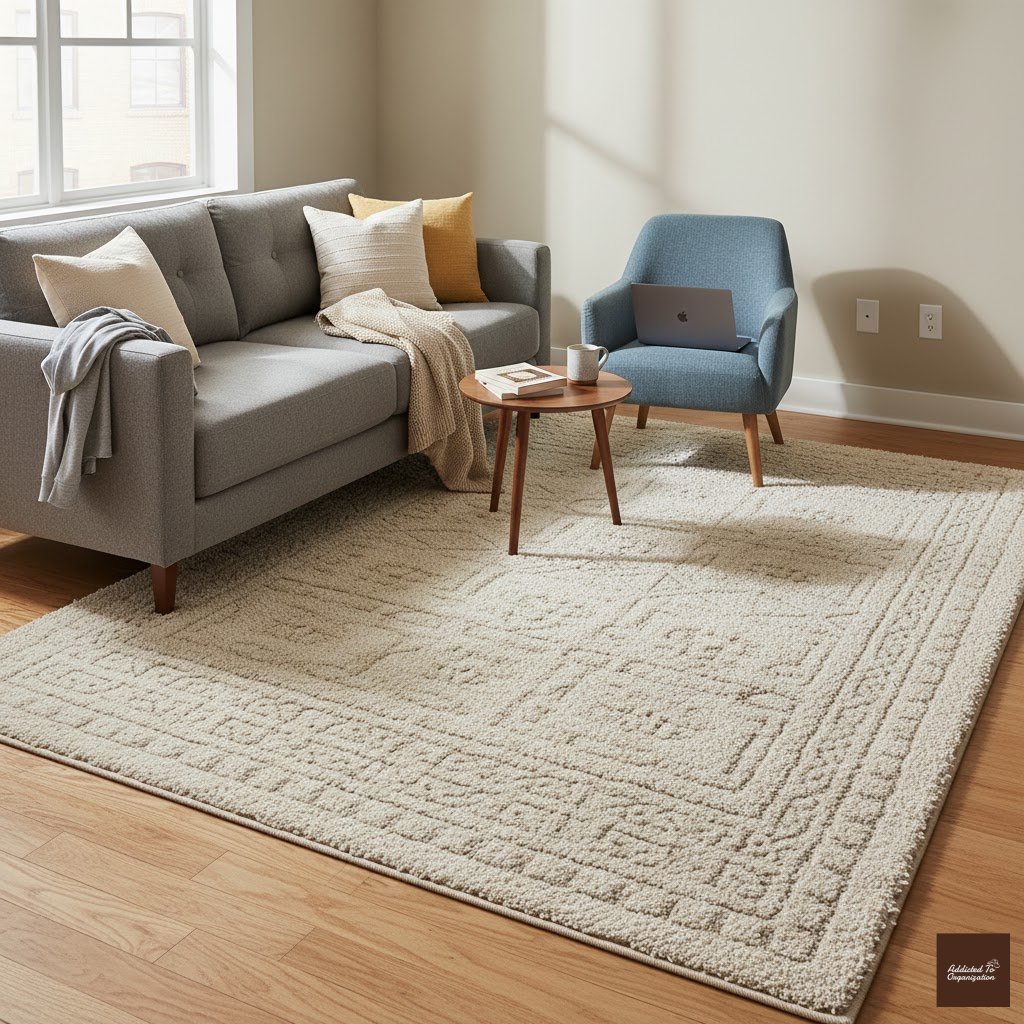
Never use a rug that is too small, as it will look like a postage stamp and visually chop the floor into tiny fragments. Instead, choose a rug large enough for at least the front two legs of your main sofa and accent chairs to rest upon. A larger rug anchors the furniture grouping and widens the floor area visually, defining the room’s purpose cohesively.
13. Use Ottomans or Poufs for Guest Seating
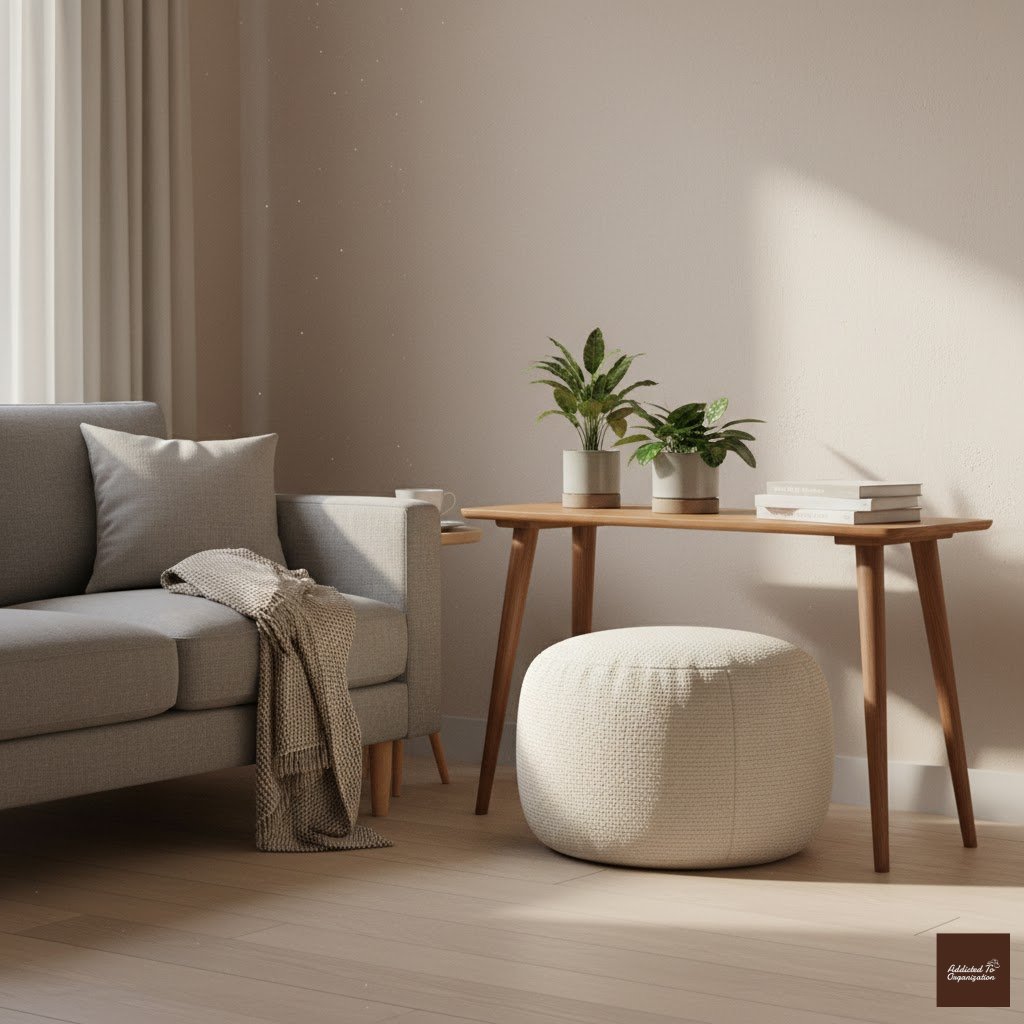
If you only have guests occasionally, don’t clutter your space with permanent extra chairs. Ottomans, poufs, or floor pillows are perfect for temporary guest seating. They can be stacked or tucked away neatly under a console table or even a floating shelf when not in use, keeping the precious floor empty most of the time.
14. Keep Shelving Vertical, Not Horizontal
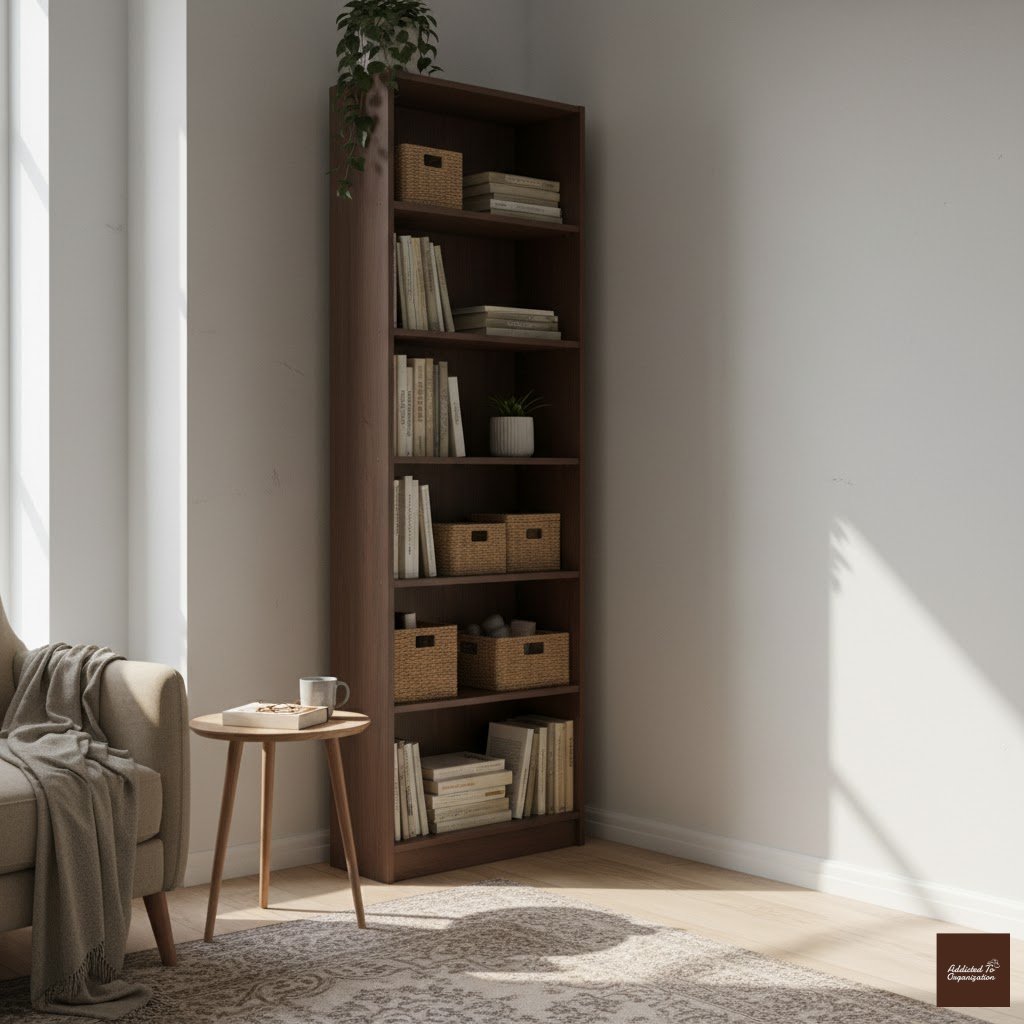
In a small apartment, you need to think up, not out. Tall, narrow bookcases maximize vertical storage capacity and draw the eye upwards, emphasizing ceiling height. Horizontal shelving units take up too much floor area and can make the room feel compressed.
15. Choose Nesting Tables Over Separate End Tables
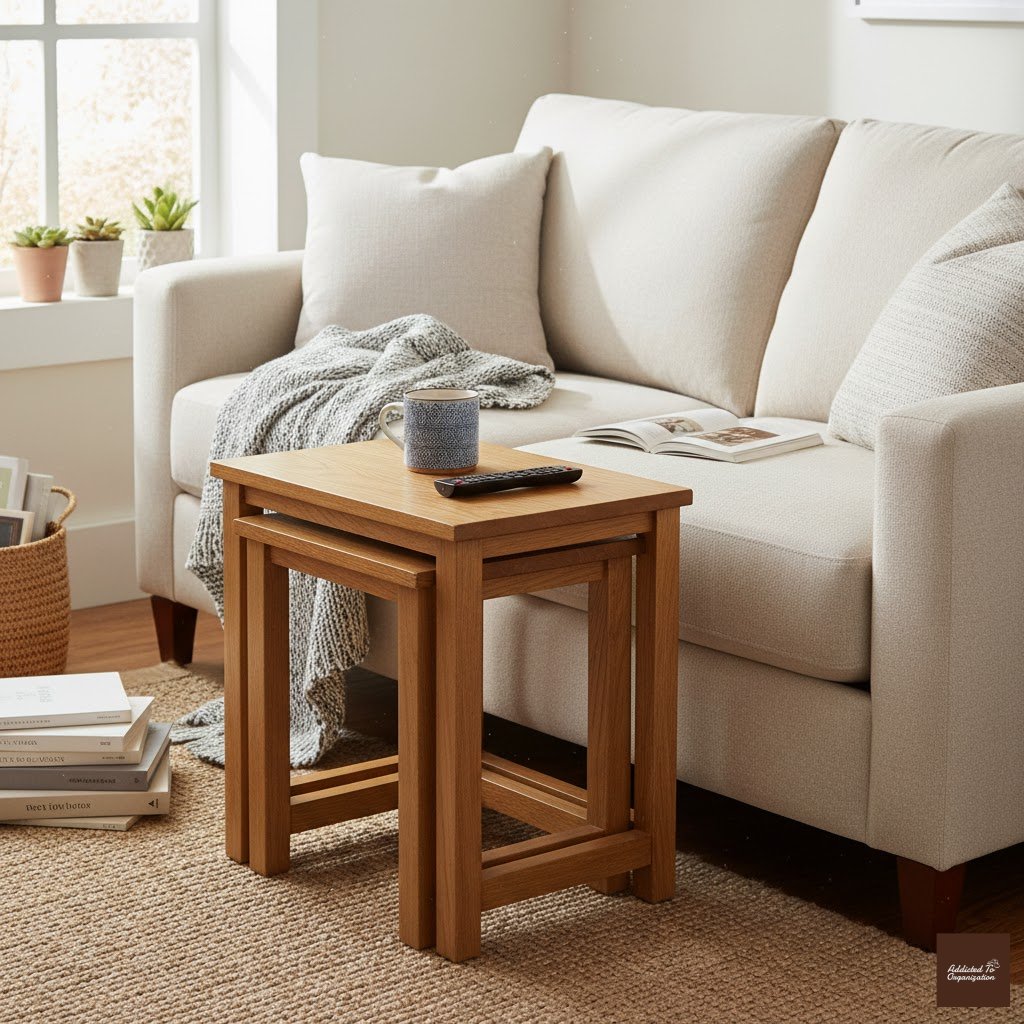
Nesting tables are the chameleons of apartment furniture. They function as a single, compact side table daily, but when company arrives, you can simply pull out the smaller tables for instant, temporary surfaces. They offer expandable utility while maintaining a tiny footprint.
16. Add Peel-and-Stick Wallpaper Behind the Sofa
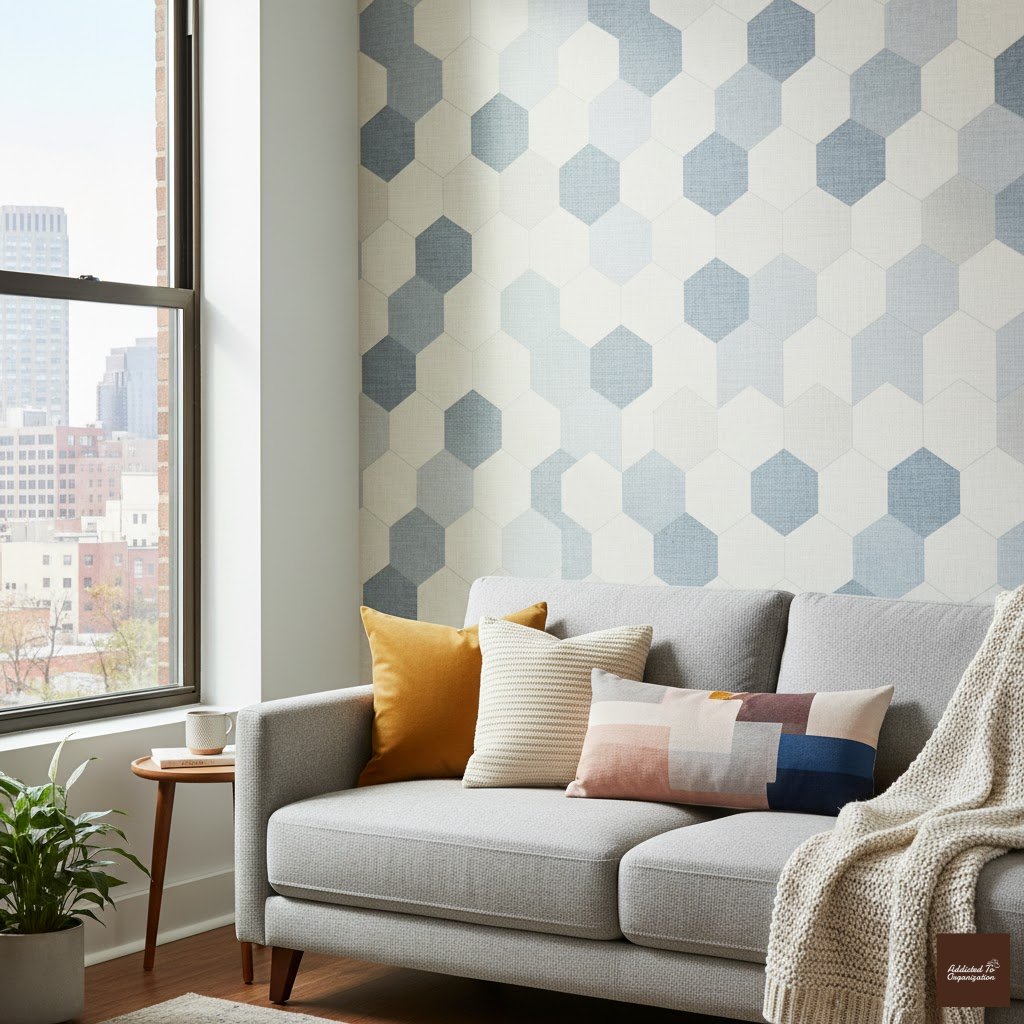
Want a dramatic accent wall without risking your security deposit? Peel-and-stick wallpaper is a renter’s dream. Adding a pattern or texture to the wall behind your sofa gives the room personality, depth, and a clear focal point without visually shrinking the space like a dark paint color might.
17. Use Closed Baskets for Open Shelving
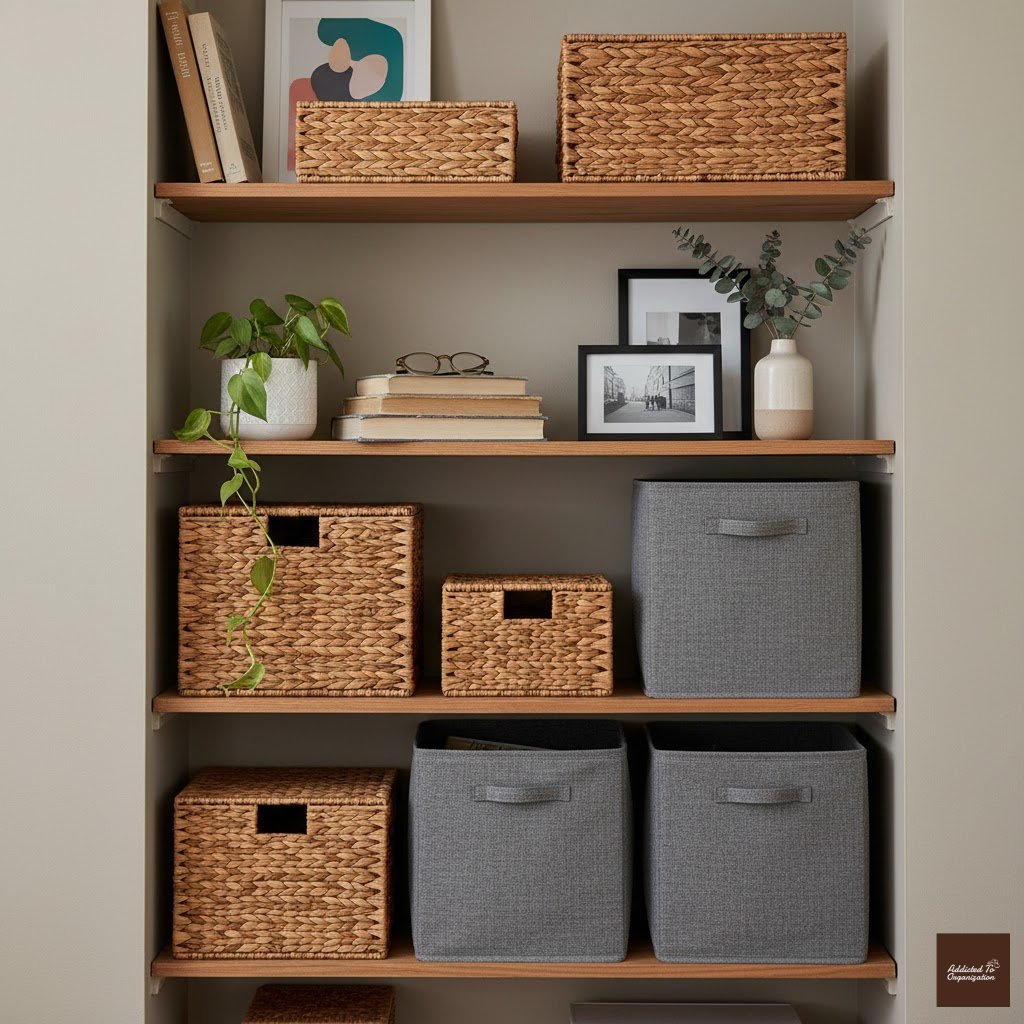
Open shelving can quickly turn into a chaotic display of clutter. To keep the look tidy while maintaining functionality, use closed baskets, storage boxes, or bins that fit neatly onto your shelves. This hides visual noise (remotes, cables, charging cords) while keeping everything organized and accessible.
18. Mount the TV Instead of Using a Media Stand
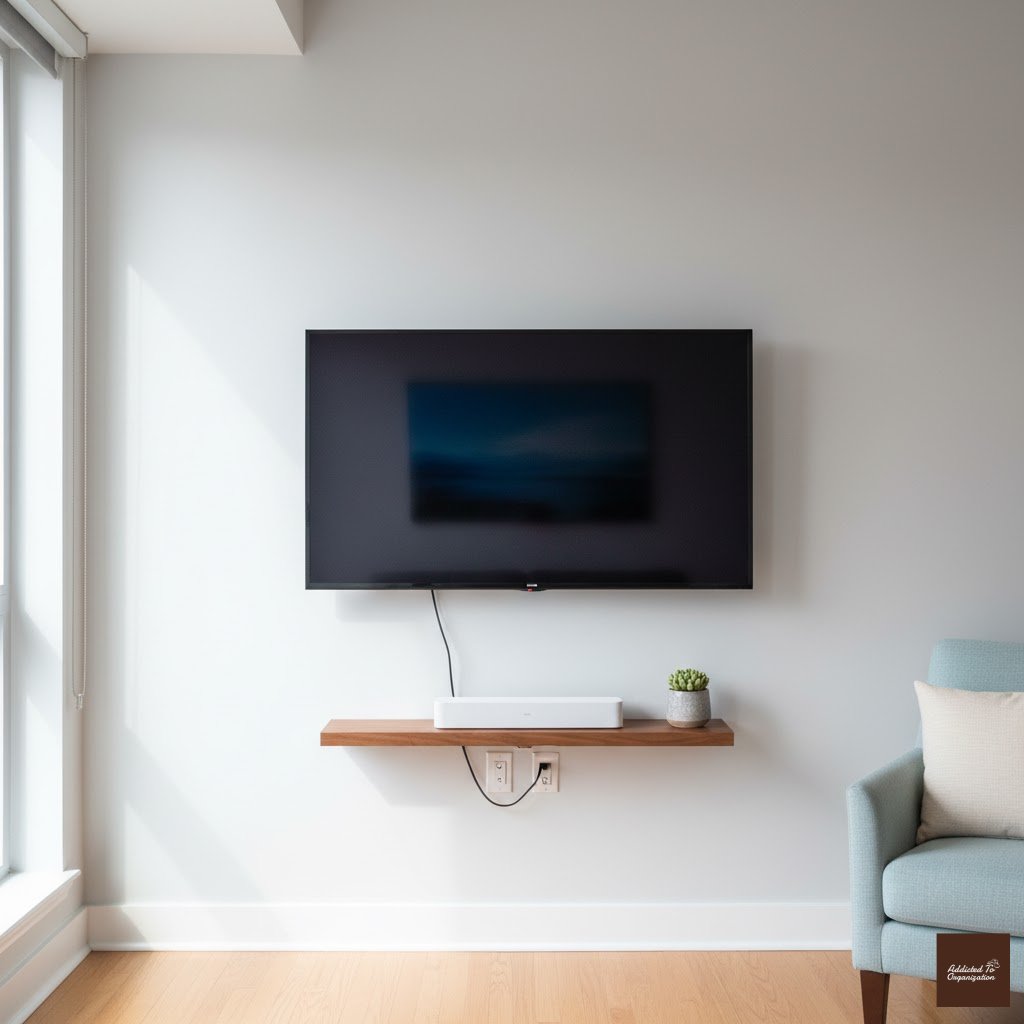
If you’ve already decided to mount your TV, take it one step further and eliminate the media stand altogether. This frees up a huge footprint of floor area and makes the entire wall feel cleaner and more deliberate. You can use the space below for a simple pouf or storage basket.
19. Use a Fold-Down Wall Desk if You Work From the Couch
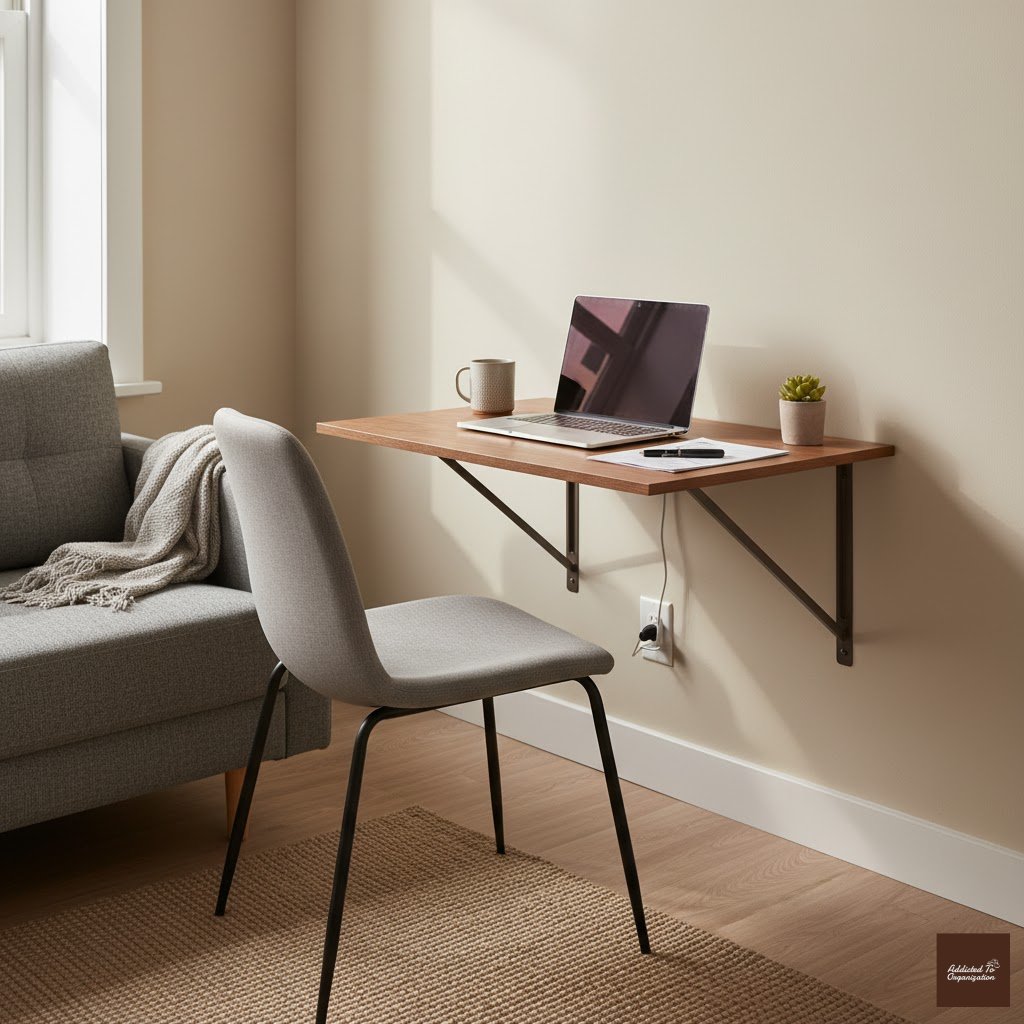
If your living room doubles as your work-from-home space, consider a skinny drop-leaf or fold-down wall desk. When closed, it looks like a narrow shelf or a piece of wall decor. When open, it gives you a functional workspace without committing any permanent floor space.
20. Match Wood and Metal Tones for Cohesion

When you use a random mix of cherry wood, light oak, silver metal, and black metal, the room instantly looks busy and disjointed. By repeating the same finishes (e.g., all warm brass and walnut wood) across your furniture, lighting, and accessories, you create a unified, calming aesthetic that makes the entire space feel larger and more intentional.
21. Choose One Dominant Color Palette
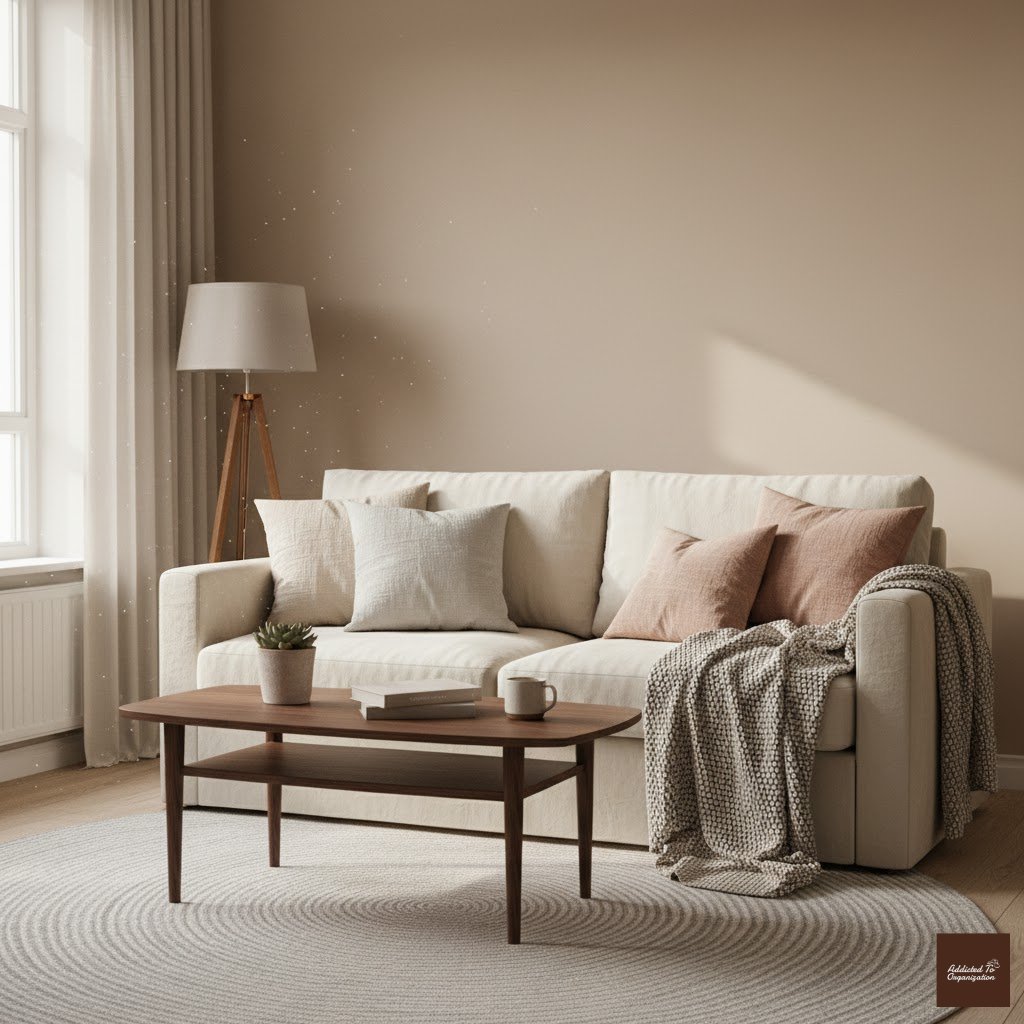
Limiting your color choices to a monochromatic scheme or a tight palette of three complementary colors reduces visual tension. When the eye isn’t constantly jumping between competing colors, the space feels calmer, less cluttered, and more sophisticated, which inherently translates to a more open feel.
22. Layer Soft Lighting, Not One Harsh Overhead Light
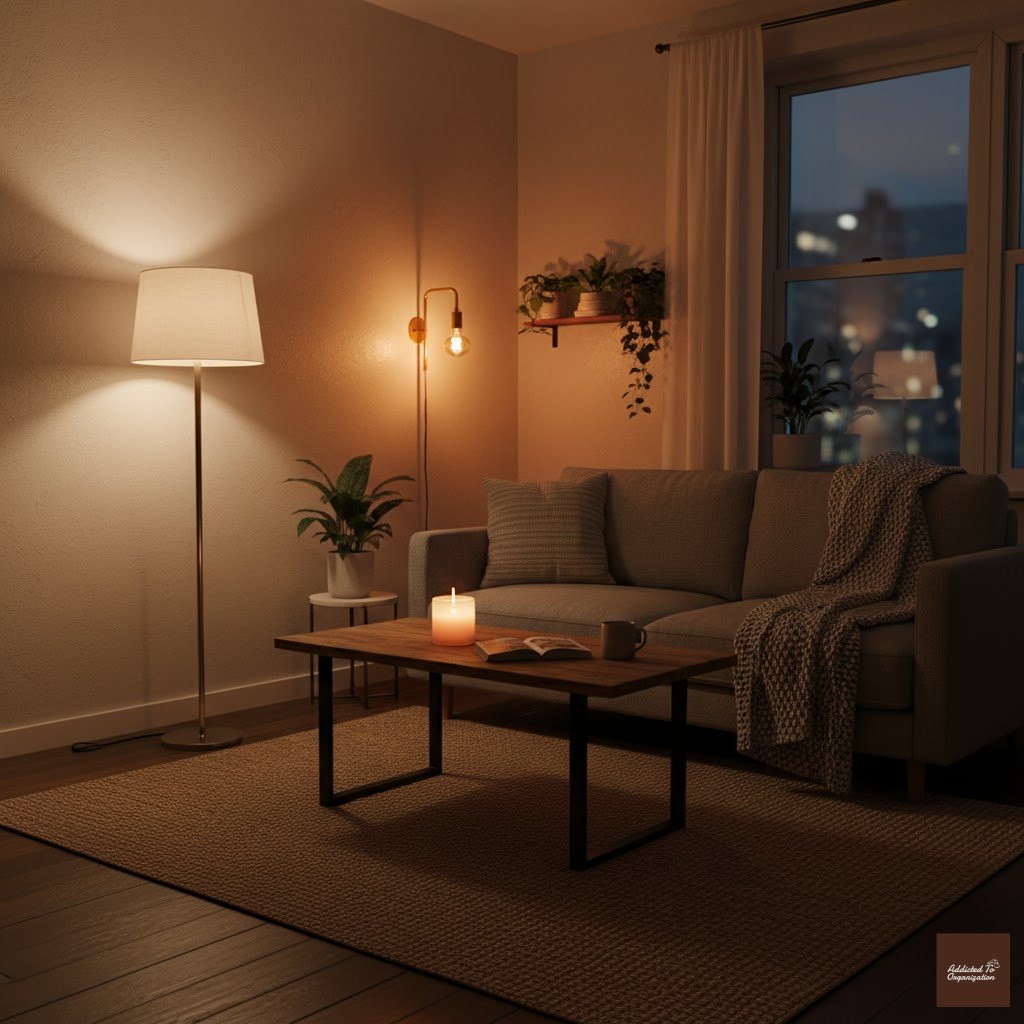
Ditch the single, harsh overhead light source (the “big light”). Instead, use a mix of ambient light sources—floor lamps, wall sconces, and candles—to create warm depth and dimension. Layering light prevents corners from becoming dark, dead zones and makes the room feel larger than a single source ever could.
23. Replace Heavy Drapes With Sheer Panels
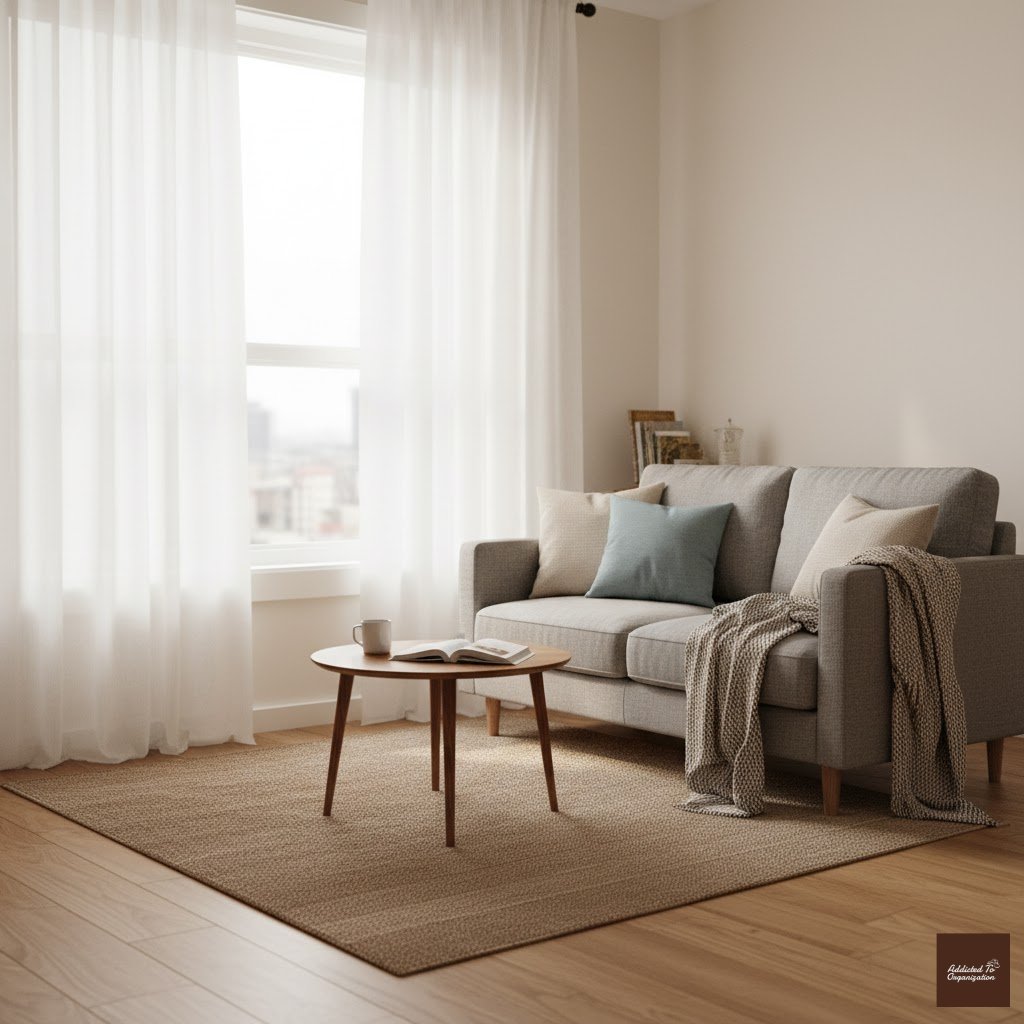
Heavy drapes block precious natural light, making your room feel like a dungeon. Switch them out for light, sheer panels. These allow maximum sunlight to filter in, making the room brighter and airier, while still softening harsh window edges and providing a comfortable layer of privacy.
24. Float Furniture Away From Walls Even by a Few Inches
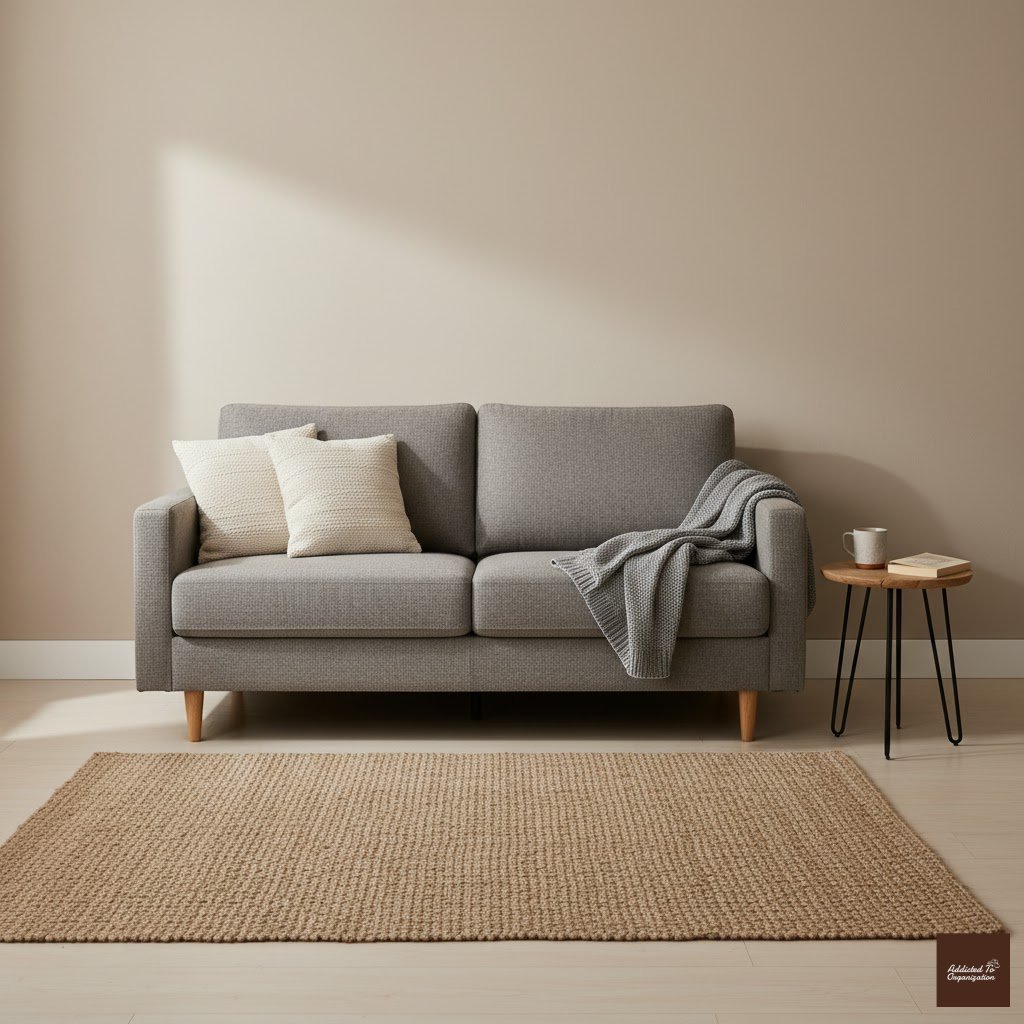
This seems counter-intuitive, but hear us out! Pushing all your furniture against the wall makes the room feel flat and compressed. By pulling your sofa and chairs forward just a few inches, you create a slight shadow line behind them. This minor gap adds subtle depth and dimension, preventing the room from looking like a staged box.
25. Use Corner Seating or Corner Shelving
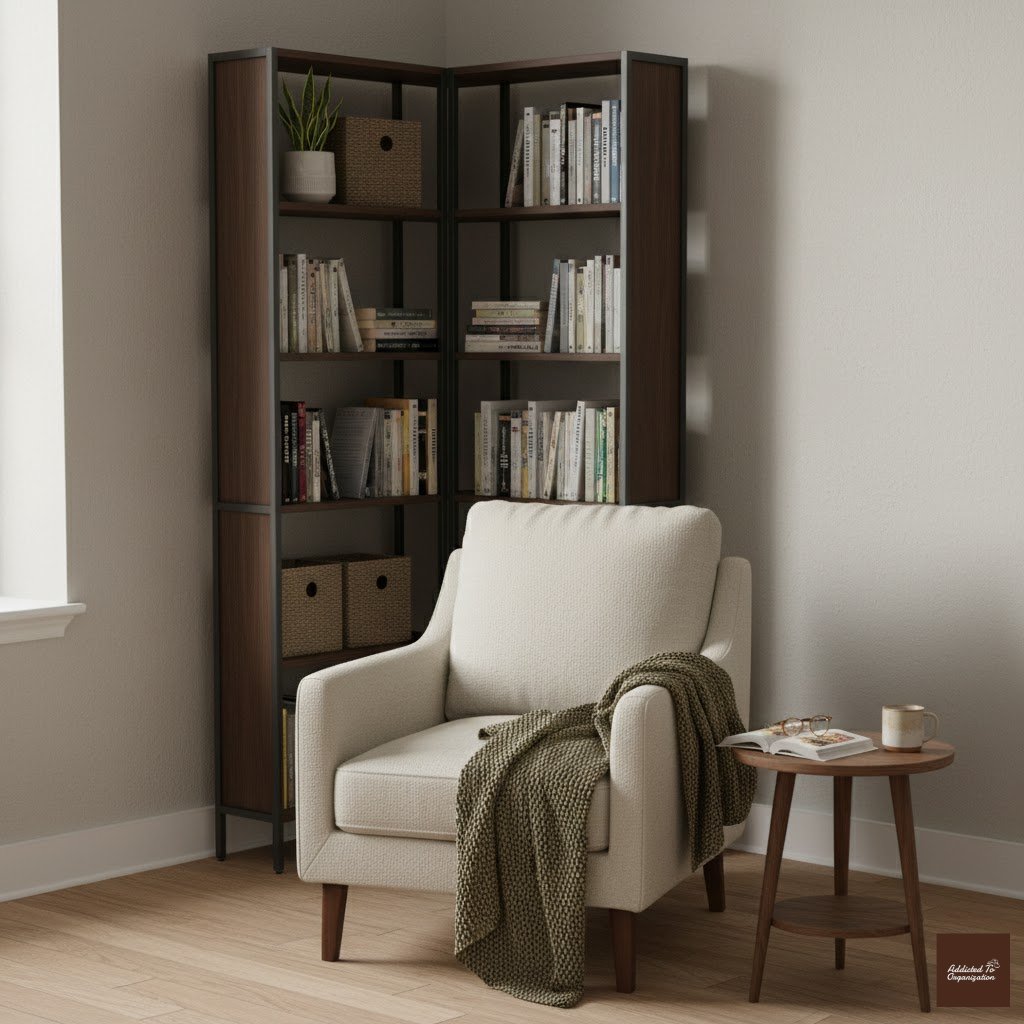
Corners are often the most wasted space in an apartment. Use a corner-fitted bookshelf to utilize that vertical space, or consider a small, modular sofa piece designed to fit snugly into a corner. Maximize these normally dead zones for either reading nooks or much-needed storage.
26. Choose Foldable or Stackable Accent Chairs for Rare Guests
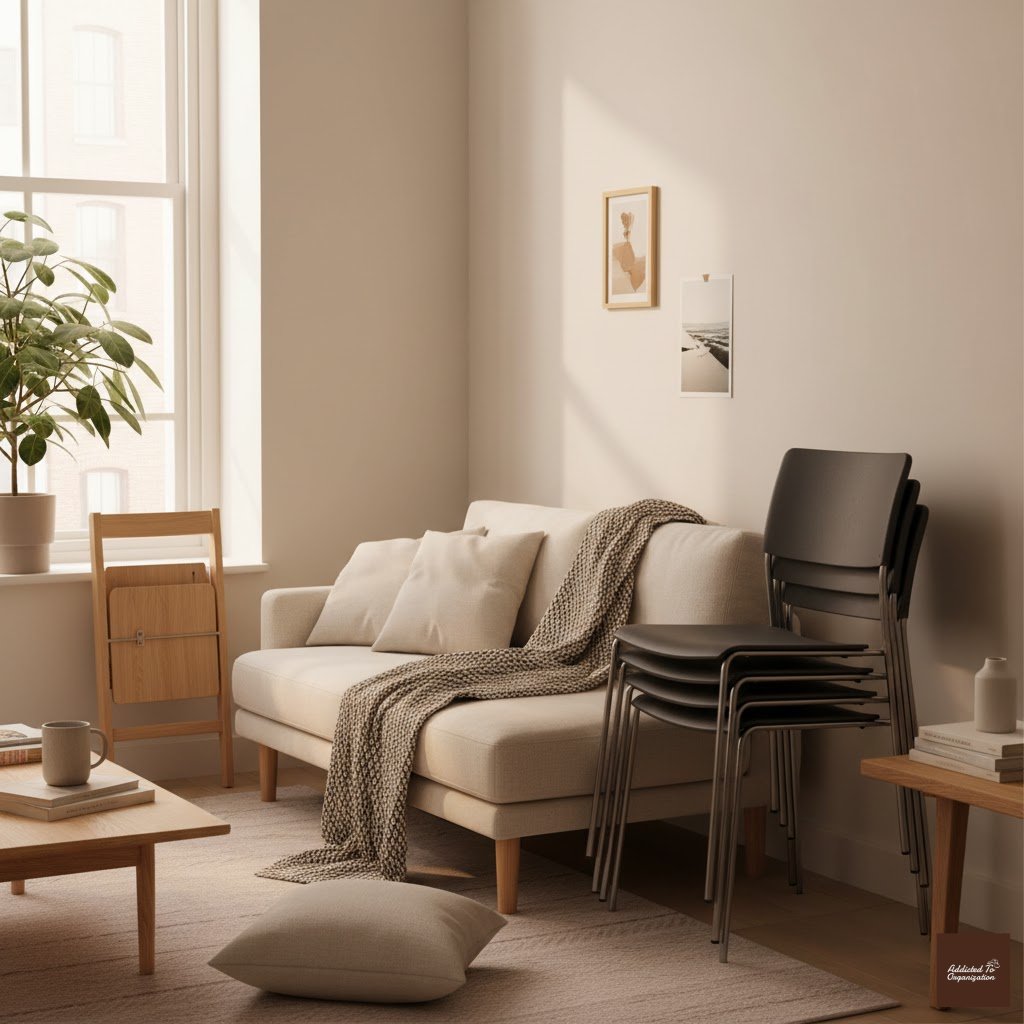
If you only have extra seating needs a few times a year, don’t let those chairs hog your floor space every day. Invest in a stylish, collapsible accent chair or lightweight folding chairs that can be stored in a closet. Only open them when needed—the rest of the week, enjoy that empty floor!
27. Use Tray Styling Instead of Scattered Decor
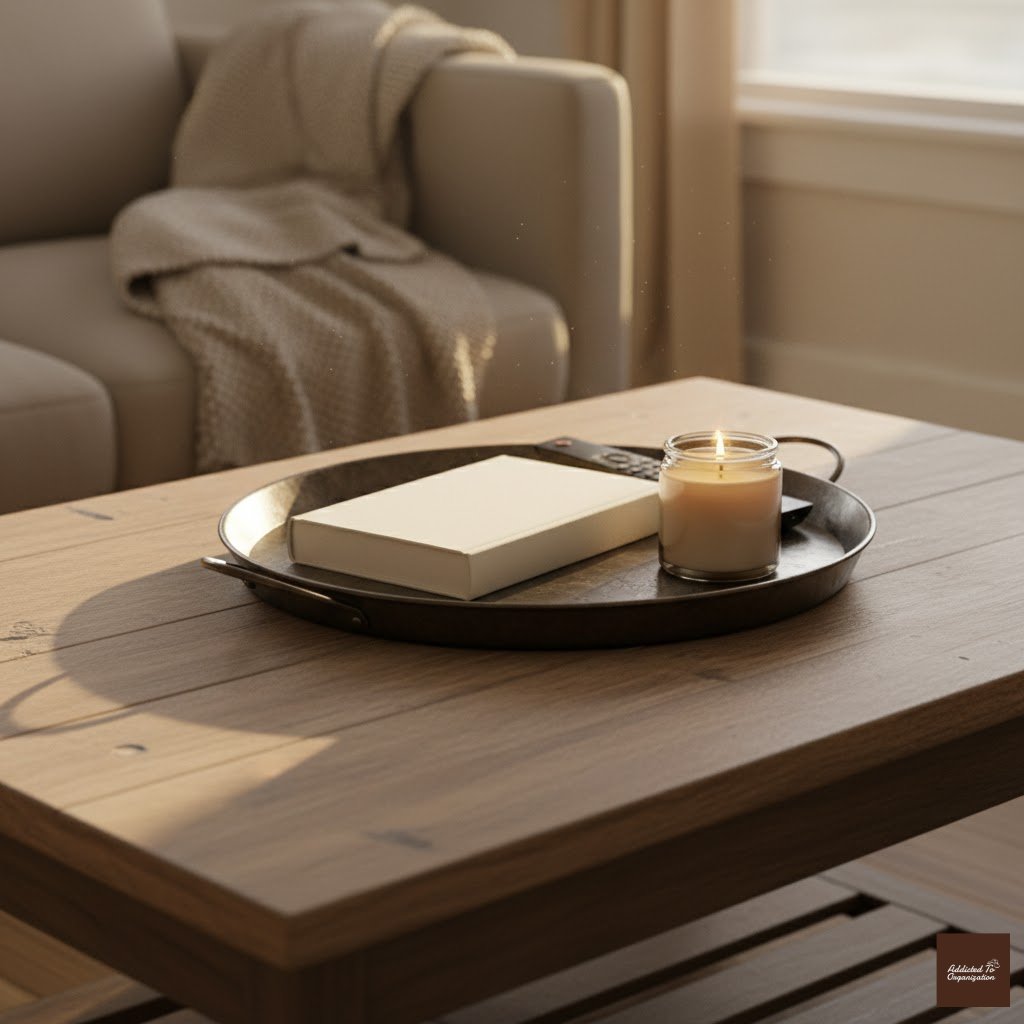
Do your remotes, coasters, keys, and candles look like a chaotic mess? Contain your decor! By grouping these smaller items onto a single, stylish tray on your coffee table or console, you instantly turn visual clutter into an organized, tidy vignette. Tidy surfaces look longer and cleaner.
28. Add Greenery, But Choose Slim or Tall Plants
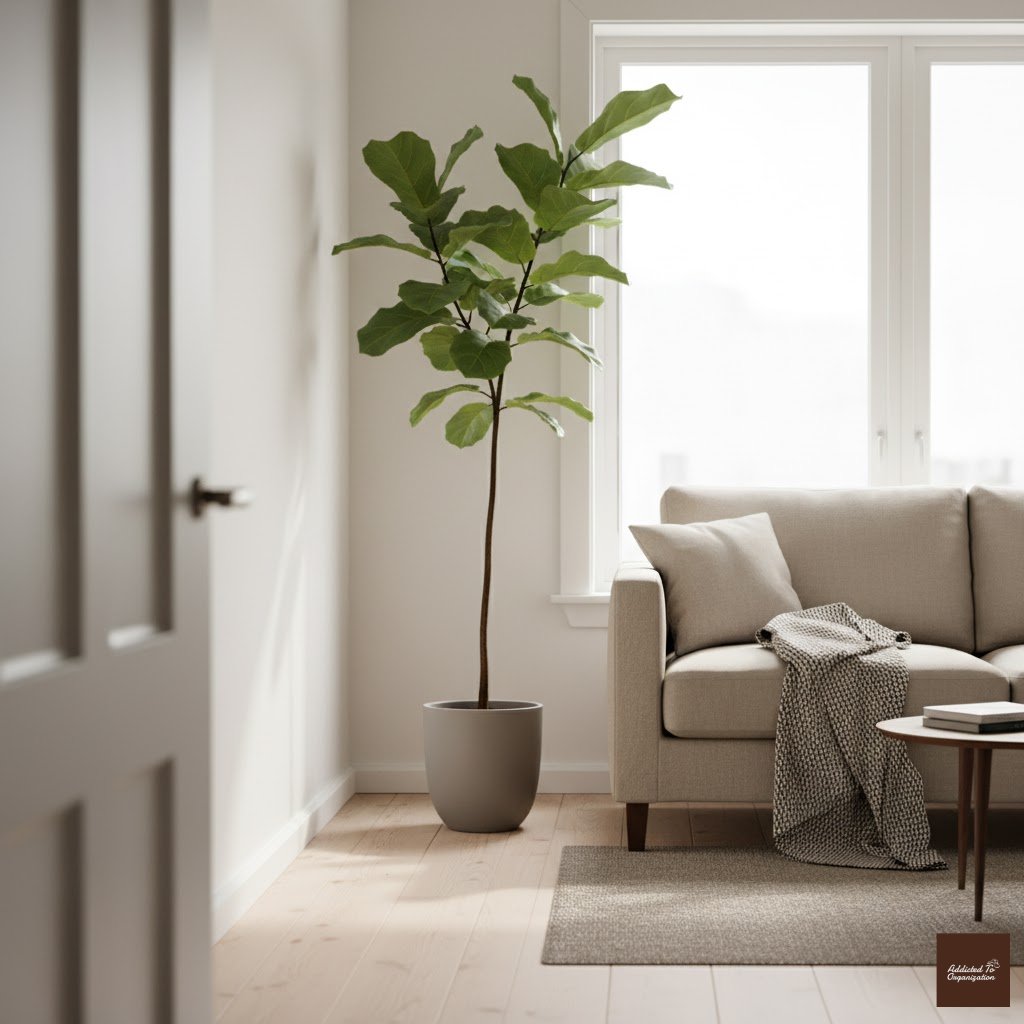
Plants are essential for adding life, but small rooms can’t handle a sprawling jungle. Choose one tall, slim plant—like a snake plant or a small fiddle leaf fig—to draw the eye up toward the ceiling. One large, vertical element has far more impact and looks less cluttered than six tiny pots scattered across every surface.
29. Use a Room Divider Shelf If You Share Space With Dining
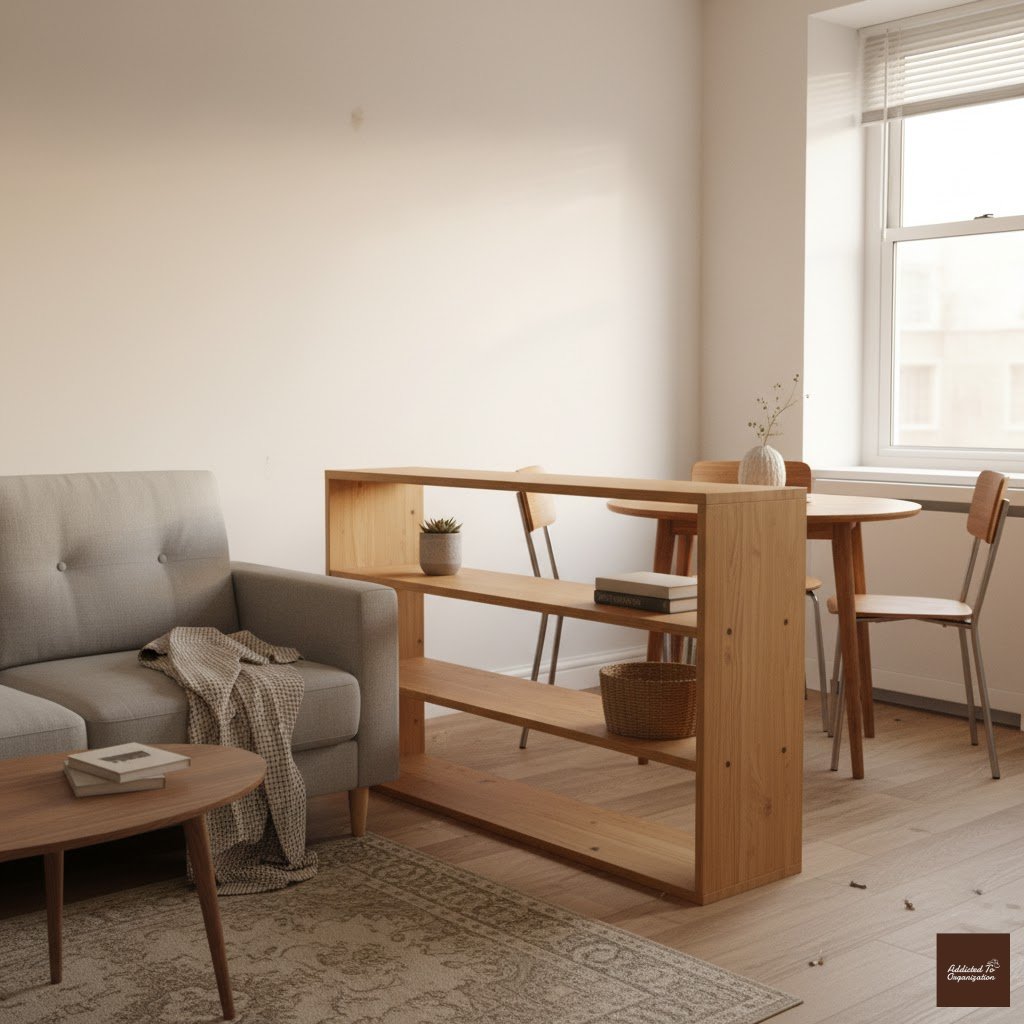
If your living room blends with your dining area or kitchen, you need division without obstruction. Use a low, open-back bookshelf (like a cubed unit) as a subtle divider. Because you can see light and objects through the shelf, it defines separate functional zones without visually closing off or shrinking the overall space.
30. Keep the Floor as Empty as Possible
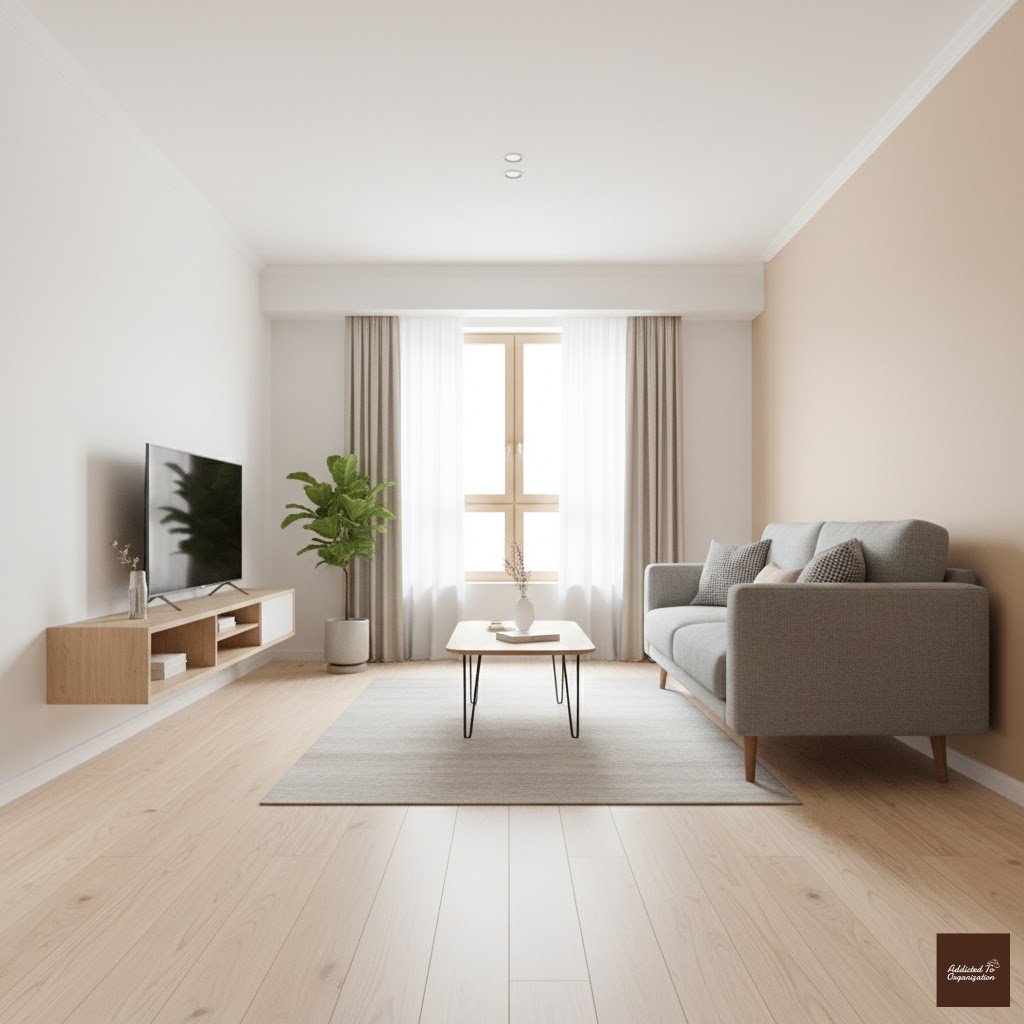
If you remember only one thing, let it be this: the more visible your floor line is, the larger the room reads. This means lifting things up (floating shelves, wall-mounted TVs), hiding things away (storage ottomans, closed baskets), and generally resisting the urge to scatter small items on the floor. Maintain that clean floor line for maximum visual space.
Phew! Thirty detailed ways to conquer small-space living.
See? Your tiny living room isn’t a design challenge—it’s an opportunity! Which of these ideas are you trying first? Are you tackling that sneaky floating furniture trick or finally streamlining your wood and metal finishes?
Drop a comment below and let me know! If you found this list helpful (or hilarious), don’t forget to share it with a friend who’s struggling with apartment space and pin it for later inspiration. Happy decorating!
Don’t miss out!
Join for beautiful décor ideas, helpful organization tips, and seasonal looks.

